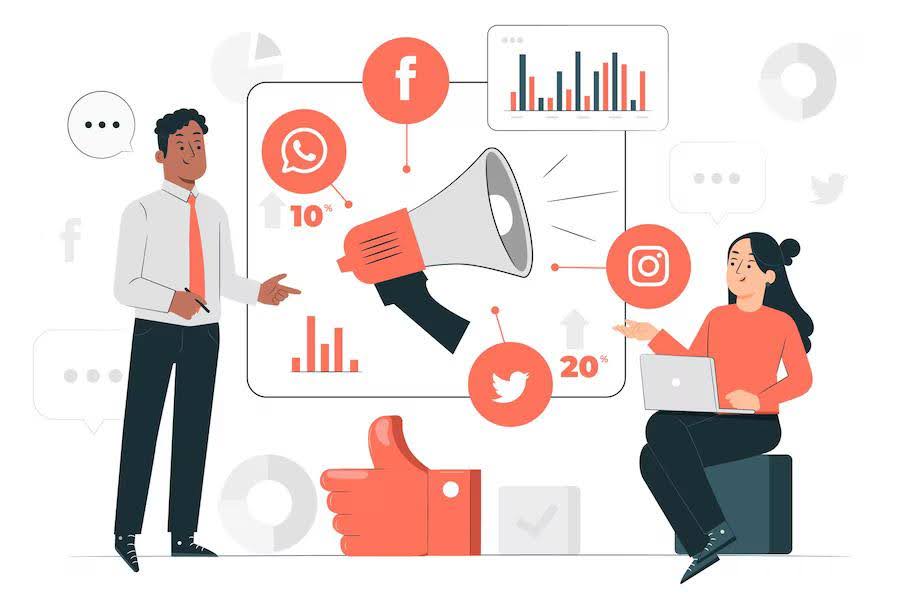Published on: 01 Aug 2024
Reading time: 6 minutes
Today, the online landscape has become one of the best mediums for brands to reach their audiences, create brand awareness, and drive conversions. However, as the internet is getting increasingly crowded, using popular ad formats like rich media ads and implementing certain best practices and digital advertising techniques is not only beneficial but crucial for brands to make an impact on their audience.
What Is Digital Marketing?
Digital marketing is one of the most popular methods of advertising and involves online marketing campaigns that are served across several devices, like phones, computers, tablets, etc. Digital and marketing strategies can include many types of advertising techniques, like PPC, affiliate marketing, search engine optimization, content marketing, etc., and ad formats, including display ads, video ads, rich media ads, etc. Digital marketing is the best method of advertising for brands of all sizes, offering everyone a level playing field and allowing brands to connect with potential customers through various forms of digital communication to promote their products and services.
Digital marketing encompasses a wide range of advertising techniques and methods of advertising. When it comes to the many types of advertising techniques, top examples include:
- Display Advertising: Display advertising uses images, video, and text elements to create ads that are served across third-party websites. Display ads can be static as well as rich media ads and can be used in various digital marketing campaigns to achieve different marketing objectives.
- SEO: SEO, or search engine optimization, is the process of optimizing a brand’s digital assets using keywords, interlinking, backlinking, etc. to improve its visibility on search engine result pages organically.
- Content Marketing: Content marketing is one of the best methods of advertising online, and it involves a strategic approach that focuses on creating and sharing valuable and relevant content to attract and retain customers and consequently drive profitable consumer actions.
- Social Media Marketing: Another one of the most popular advertising techniques, social media marketing involves using social media platforms to build social networks, connect with the audience, and share valuable content to keep them engaged.
- PPC: Pay-per-click, or PPC, is a type of online marketing where an advertiser pays only if a user clicks on their ad. Since the ad spend is determined by the number of clicks you get on an ad, it is a cost-effective way to increase traffic to a brand’s website.
- Email Marketing: One of the best advertising techniques, email marketing is a direct marketing channel through which brands can share information about new products, sales, and company updates with customers on their contact lists.
- Affiliate Marketing: Affiliate marketing is a performance-based advertising technique where influencers, content creators, etc. can earn money by promoting products or services of a brand.
- Influencer Marketing: Somewhat similar to affiliate marketing, influencer marketing is another one of the most popular examples of advertising techniques used by brands, where they collaborate with popular social media influencers for paid promotions of their products or services.
Best Practices in Digital Marketing
Digital marketing is undoubtedly one of the best methods of advertising for brands. But sometimes, it can get difficult for advertisers to optimize their marketing and advertising strategies for success given the crowded landscape of digital mediums. To help you out, here are some of the best examples of advertising techniques and best practices that you can consider.
Conversational Marketing
Conversational marketing is a customer engagement strategy that focuses on establishing real-time two-way conversations between a brand and its customers. Conversational marketing does not use broad, generic one-way messaging, like traditional marketing, but invites a dialogue that is more personal and dynamic. It generally entails immediate interactions, personalization, relationship building, establishing a robust feedback loop, and following a customer-centric approach.
Use Chatbots
Chatbots are used for conversational marketing and use automation technology that usually involves AI. Chatbots have great reach and are a good way for brands to offer 24/7 customer support. Chatbots are also cost-effective and offer a direct line to the audience, helping gather more information about customers. This makes it easy for advertisers to build targeted digital campaigns with personalization that goes beyond just knowing the customer’s name.
Personalization
One size no longer fits all. Customers are now on the lookout for solutions to their specific problems and most customers tend to get frustrated when they come across irrelevant content. Personalization helps brands target specific customers and build better relationships with them, create ads that people actually enjoy, improve brand loyalty, deliver better customer experiences, improve engagement rates, shorten the sales cycle, and increase the ROI of digital marketing campaigns. With dynamic creative solutions, advertisers can simply create an ad’s framework with placeholders for elements that need to be personalized for different users. The ad is created with relevant variations in real-time, based on who the ad is being served to.
Video Marketing
Video is one of the most popular ad formats today, offering advertisers a fun and engaging way to market to the target audience. Most video ads fall into one of three categories – product/service videos, brand-specific videos, and how-to or explainer videos. One of the most important things to remember in video marketing is to weave a story that resonates with the audience.
Micro-Moments
Micro-moments refer to moments of pure intent when a user heads towards their device to act on a specific need to know, do, go to, or buy. Micro-moments hold a lot of significance for advertisers as these are the moments when users want their needs met and are drawn to brands that can do so. First, you need to create buyer personas, which will help identify the ‘to-buy’ micro-moments of your audience. Then, anticipate their needs and target those times to ensure you are there when the need arises. Provide an ad experience that is relevant for users in that moment and ensure a seamless customer journey for your audience.
HTML5 and Rich Media Ads
Using attention-grabbing, interactive ad formats to promote your brand’s offerings is another one of the most effective visual techniques in advertising. Using HTML5 ads, rich media ads, video ads, and a mix of other ad formats can help you stand out and attract potential customers in a more efficient manner.
Omnichannel Marketing
Omnichannel marketing is simply about having a presence across a variety of digital platforms as well as offline customer touch points. It helps establish a consistent voice, tonality, and brand message across the digital as well as physical landscape. Omnichannel marketing creates multiple customer touchpoints for your audience online and offline, which helps increase engagement and sales. Omnichannel marketing also starts with understanding the audience and segmenting them to create targeted brand messaging that aligns with the customer journey of the different segments.
Privacy in Marketing
With the introduction of consumer privacy measures, like the GDPR and the California Consumer Privacy Act, advertisers need to be more intentional with their targeting. This means earning the trust of the audience, engaging through the right platforms, and keeping your content relevant and personalized.
How Can an Advertising Platform Help?
An online ad platform offers advertisers easy to use tools for optimizing and streamlining their digital marketing efforts across all kinds of online platforms. You can build engaging ad experiences, manage all live campaigns at a single place, use tracking and reporting capabilities to monitor the performance of your ad campaigns, make changes to live campaigns based on performance, and much more.
With the constant evolutions of the digital landscape and more and more brands rushing online to market their wares, it has become essential for brands to think out of the box. Using certain best practices can work well for brands, but they will need to experiment a little to identify what works for them.
Schedule a demo




